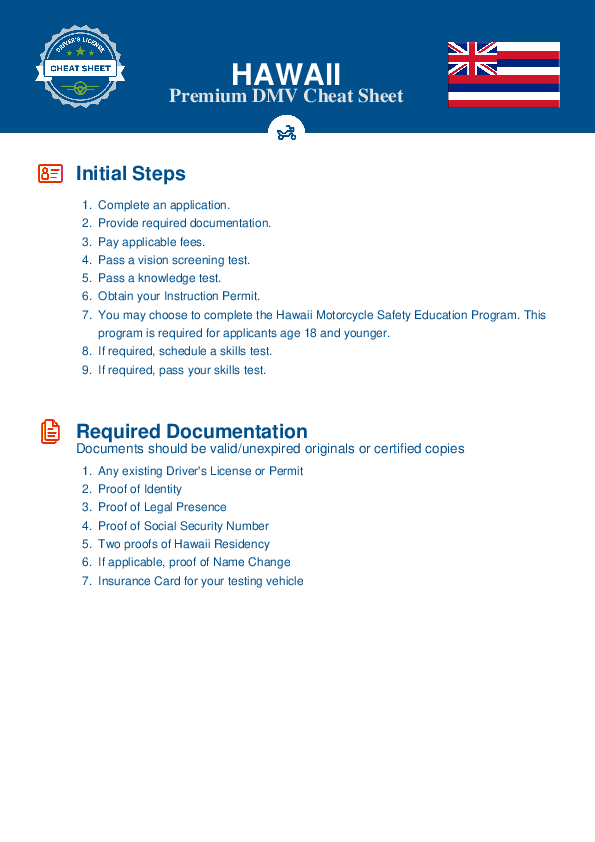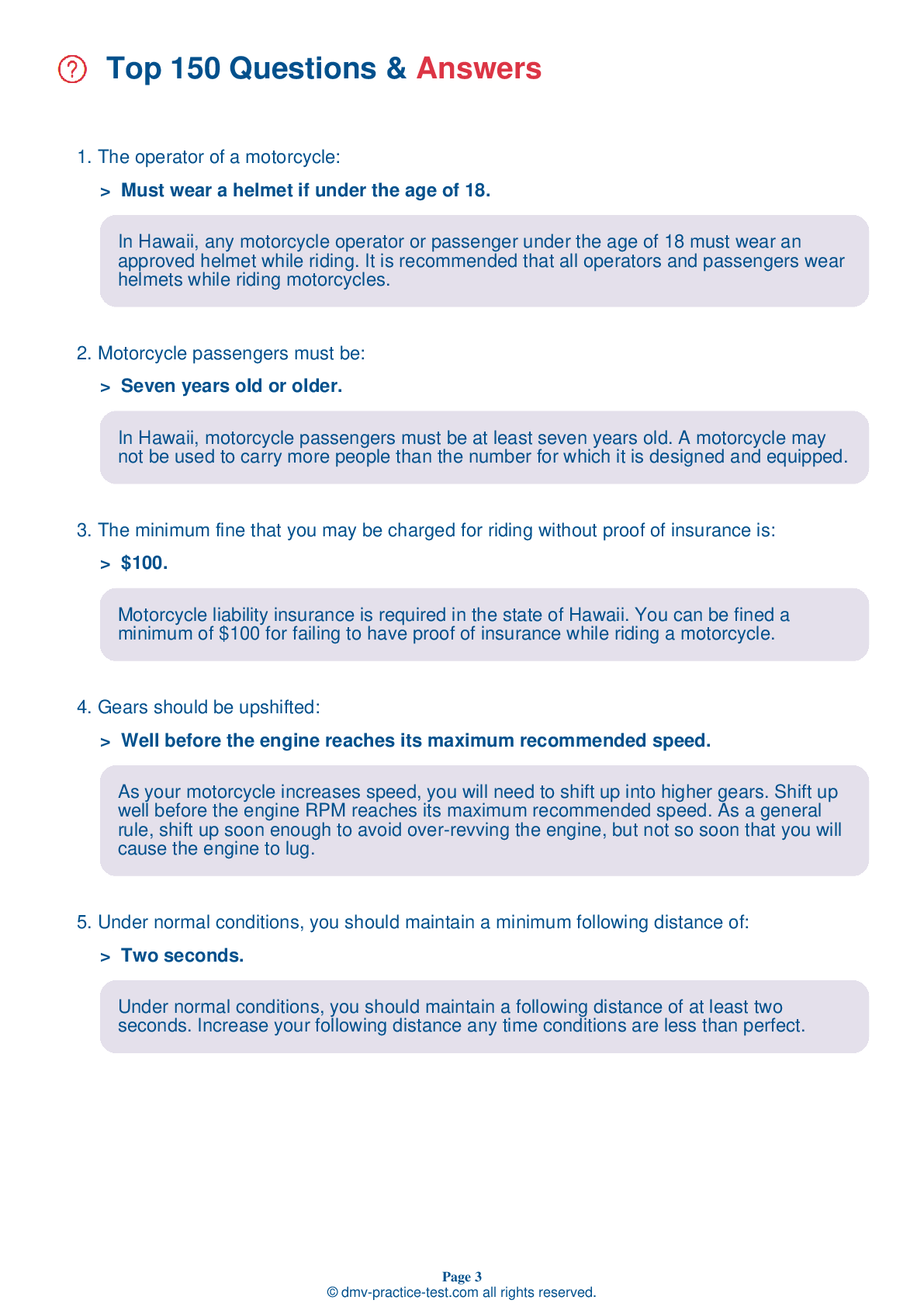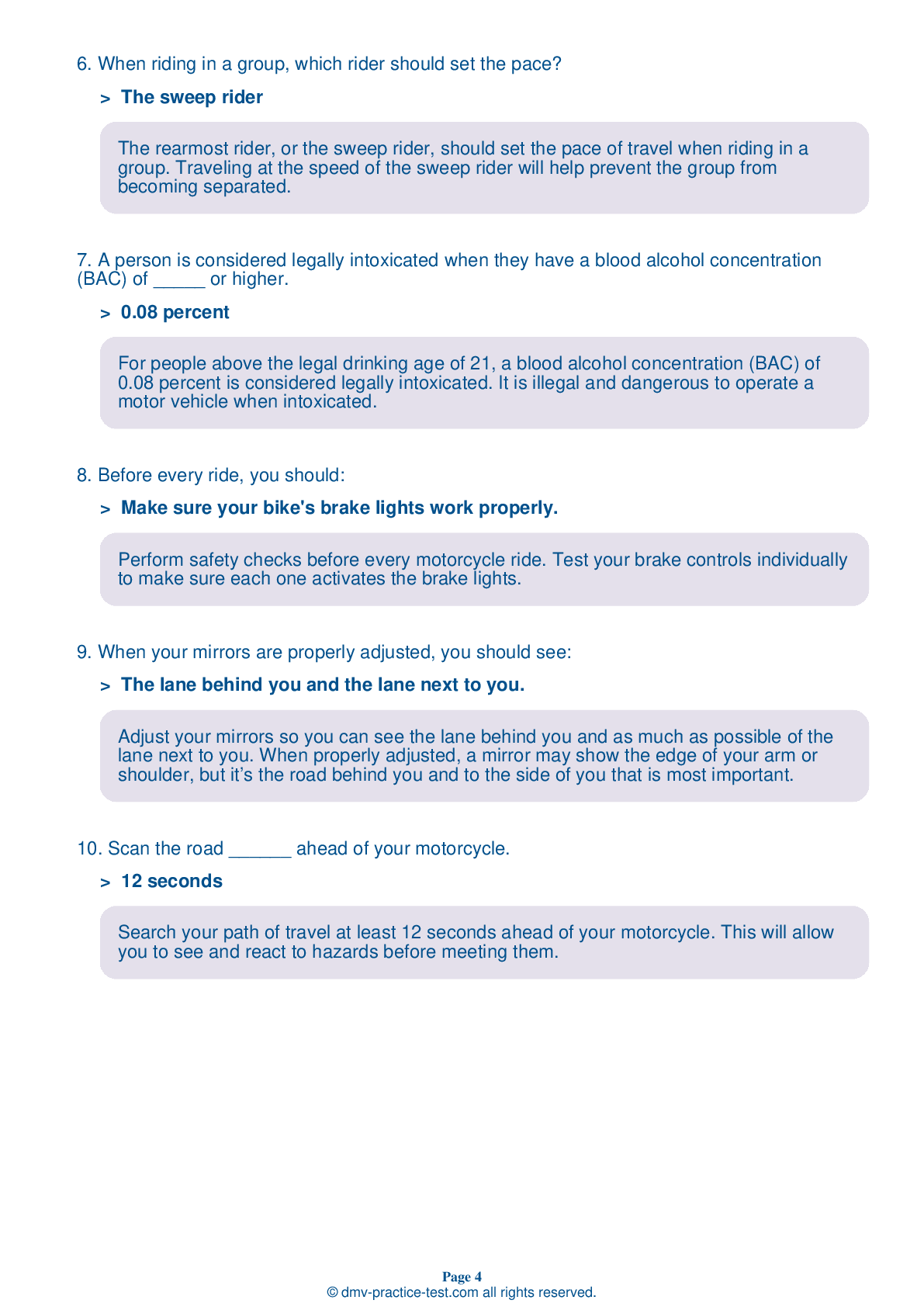Motorcycle Test | License HI 2026 | FREE Online Practice! #5
Take this FREE motorcycle test (license in HI 2026) to check your knowledge of the road rules. To improve your results, download a motorcycle handbook online, study theory, and practice for free on our website. Still worried about how to get a motorcycle license in Hawaii in 2026? Check our website for more sample tests, train as much as possible, and boost your grades!
1 . A moped has an engine no larger than:
Under Hawaii law, a moped is defined as a two- or three-wheeled vehicle that can travel no faster than 30 mph on a level surface and that has a motor no larger than two horsepower.
2 . While braking a motorcycle with a sidecar, you may need to:
A sidecar adds additional weight to one side of your motorcycle. You may need to steer slightly in the direction of the sidecar when applying your motorcycle's brakes if the sidecar is not also equipped with brakes.
3 . When riding with a passenger, the operator should:
Because a motorcycle handles differently when under the weight of a passenger, an operator should maintain a larger space cushion when transporting another person.
4 . When your mirrors are properly adjusted, you should see:
Adjust your mirrors so you can see the lane behind you and as much as possible of the lane next to you. When properly adjusted, a mirror may show the edge of your arm or shoulder, but it’s the road behind you and to the side of you that is most important.
5 . When riding, you should:
Always look through a turn to where you want to go. Turn only your head to look, not your shoulders, and keep your eyes level with the horizon.
6 . When downshifting, the first thing you should do is:
When downshifting, you should first roll off the throttle as you squeeze the clutch lever. Next, press the shift lever down firmly. Ease out the clutch lever and roll on the throttle as you complete the gear shift.
See the exact questions that will be on the 2026 Hawaii DMV exam.
99.2% of people who use the cheat sheet pass the FIRST TIME
Jeneen was tired of paying $5/gallon. She got herself a scooter that required the motorcycle license. She studyed the motorcycle test cheat sheet and passed her test the next day!
Christopher tells us how he knew nothing prior to obtaining the motorcycle study guide, and he only got one question wrong because he clicked on the wrong answer by mistake.



